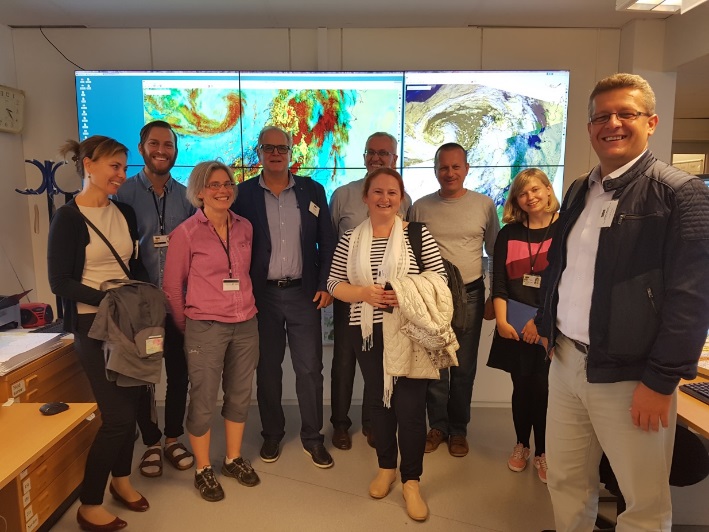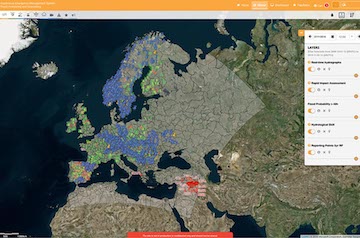
A delegation from Bosnia and Herzegovina (BiH) participated in the World Water Week taking place in Stockholm, Sweden. On 29 August the group took the opportunity to visit SMHI (the Swedish Meteorological & Hydrological Institute), one of EFAS’ Dissemination Centres, to participate in an EFAS training.
Bosnia and Herzegovina recently became an EFAS member and has two partners representing each of the country’s entities: the Federal Hydrometeorological Institute of BiH and the Republic Hydrometeorological Service of the Republic of Srpska. Additionally, the Watershed Agencies for the Adriatic Sea and Sava river basins and the Public Institution Vode Srpske have joined the network as EFAS third parties. Bosnia’s apparent interest in flood forecasting was obvious throughout the training session with plenty of questions and vibrant discussions.
An operational hydrological warning service is currently under development in BiH, but there is a necessity of more forecasting tools. This is where EFAS comes into play. The country suffered severe casualties during the mid-May floods 2014 and was affected by the Balkan floods in November 2016. Prior to the flood 2014 the country was not notified by the extreme precipitation that eventually hit ground which in turn led to considerable losses both in terms of human lives and in terms of economic damage. These two events were examined using past EFAS forecasts and the notification archive. We could establish that both events were captured by models and officers on duty, respectively. The hope is to forecast future flood events and to reduce flood related losses; EFAS has potentially a role to play here.

Mr. Boško Kenjić, Head of Water Resources department at the Ministry of Foreign Trade and Economic Relations, BiH stated that after extreme floods experienced in past several years, Bosnia and Herzegovina had decided to significantly develop its flood forecasting capacities. “Reliable forecasting capacities cannot be developed overnight thus cooperation with EFAS is of extreme importance. Moreover, EFAS is giving us possibility to connect with network of European forecasters and its valuable knowledge and experiences.” added Mr. Kenjić.
We also went through EFAS related information like the JIRA communication system, EFAS-IS, the hydrological and meteorological models used within the system and the use of probabilistic forecasting. Future development of EFAS and related projects were also covered. Due to the country’s karst and mountainous characteristics and liability to orographic rainfall causing flash floods special focus was given to this EFAS feature; ERIC calculations were depicted, the system’s pros and cons were discussed and more general information on flash flood notifications was presented. Other related problems in BiH are recurring hailstorms, which significantly harm crop yields and the more or less countrywide susceptibility to landslides. Therefore, the landslide susceptibility map is a welcome feature. Additional landslide tools would be considered an asset.
The statistical calculations to derive thresholds were also described and the process where the partner is obliged to send historical time series (3 year minimum) to the Hydrological Data Collection Centre in order for the Centre to derive the return periods.
It was also identified that there is no best practice on what to do after a notification has been received by a partner. This is due to the variability in partners’ institutional capacity. The whole team agreed that it would be nice if the notifications could be further developed in order to give some added value. Consequence based information from flood risk maps is one option. Another improvement would be to include detailed regulation routines in LISFLOOD in order to improve model quality in heavily regulated areas.
The training rounded off with a tour (and group photo) at the national forecast and warning service at SMHI.

